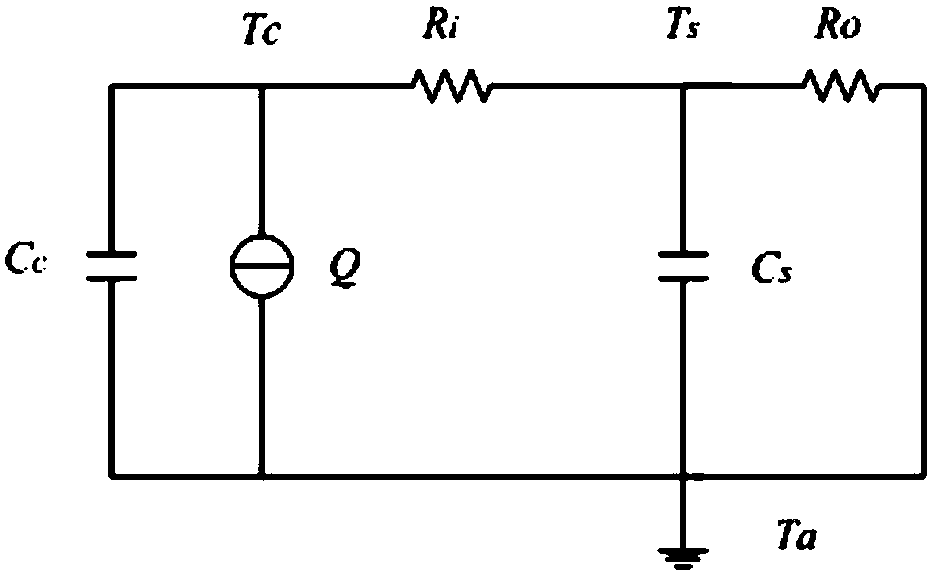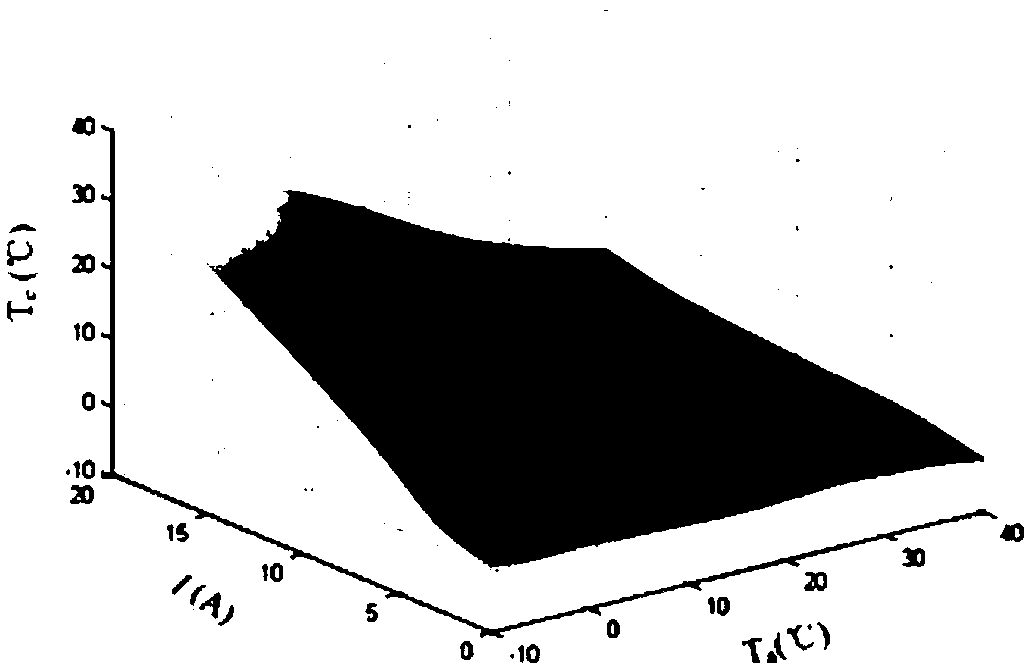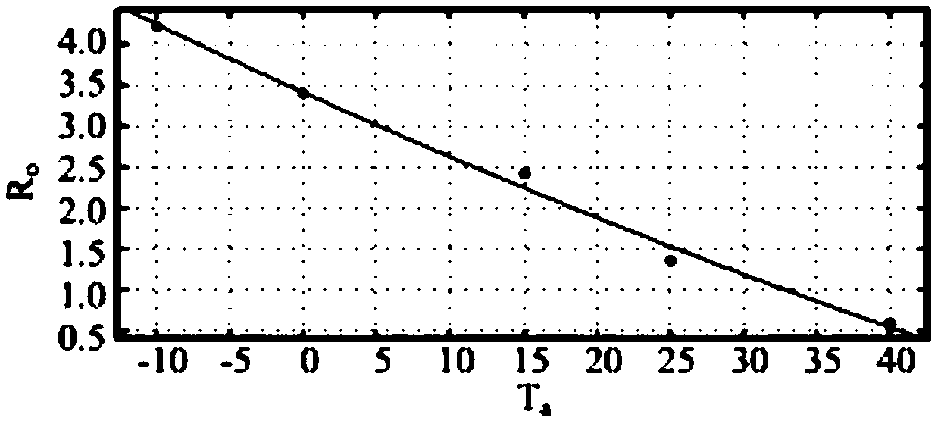Internal and external thermal resistance estimation method for lithium battery
A lithium battery, internal and external heat technology, applied in the direction of measuring electricity, measuring electrical variables, material thermal development, etc., can solve the problem of not being able to measure the internal and external thermal resistance of lithium batteries, affecting the accuracy of real-time estimation of battery internal temperature, not comprehensive and representative issues of sex
- Summary
- Abstract
- Description
- Claims
- Application Information
AI Technical Summary
Problems solved by technology
Method used
Image
Examples
Embodiment Construction
[0018] A method for estimating internal and external thermal resistance of a lithium battery comprises the following steps:
[0019] (1) Different ambient temperature gradients are set, and lithium batteries are discharged with different discharge rates and constant currents under each temperature gradient;
[0020] (2) Record the discharge current, battery internal temperature, and battery surface temperature when the lithium battery is in thermal equilibrium at each group of temperatures;
[0021] (3) By establishing a three-dimensional relationship surface diagram of discharge current, ambient temperature and internal temperature, that is, the thermal balance surface, combined with the internal and external temperature difference and the temperature difference between the surface and the environment, the accurate measurement of the internal and external thermal resistance is achieved.
[0022] Step (3) described in the establishment of three-dimensional relational surface d...
PUM
 Login to View More
Login to View More Abstract
Description
Claims
Application Information
 Login to View More
Login to View More - R&D
- Intellectual Property
- Life Sciences
- Materials
- Tech Scout
- Unparalleled Data Quality
- Higher Quality Content
- 60% Fewer Hallucinations
Browse by: Latest US Patents, China's latest patents, Technical Efficacy Thesaurus, Application Domain, Technology Topic, Popular Technical Reports.
© 2025 PatSnap. All rights reserved.Legal|Privacy policy|Modern Slavery Act Transparency Statement|Sitemap|About US| Contact US: help@patsnap.com



